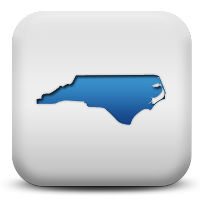Kindergarten ♦ First Grade ♦ Second Grade ♦ Third Grade ♦ Fourth Grade ♦ Fifth Grade ♦ Sixth Grade
Kindergarten
ESS.K.1.2 Use mathematics and computational thinking to summarize daily weather conditions noting changes that occur from day to day and throughout the year.
ESS.K.1.3 Obtain, evaluate and communicate information to compare weather patterns that occur from season to season.
1st Grade
ESS.1.1.1 Use models to recognize differences in the features of the day and night sky and apparent movement of objects across the sky as observed from Earth.
ESS.1.1.2 Analyze and interpret data to recognize patterns of observable changes in the moon’s appearance from day to day.
2nd Grade
ESS.2.1.1 Obtain, evaluate, and communicate information to summarize how energy from the sun serves as a source of light and warms the land, air, and water.
ESS.2.1.2 Use mathematics and computational thinking to summarize weather conditions (temperature, wind direction, wind speed, precipitation).
ESS.2.1.3 Carry out investigations to collect data and compare weather patterns that occur over time and relate observable patterns to time of day and time of year.
3rd Grade
PS.3.1.2 Carry out investigations to classify solids, liquids, and gasses based on their basic properties.
ESS.3.1.1 Use models to recognize that the Earth is part of a system called the solar system that includes the sun (a star), planets, and many moons, and that the Earth is the third planet from the sun.
ESS.3.1.2 Carry out investigations to recognize that changes in the length and direction of an object’s shadow indicate the apparent changing position of the sun during the day.
ESS.3.1.3 Obtain, evaluate and communicate information to recognize the patterns of the stars (including the sun) stay the same as they appear to move across the sky.
ESS.3.2.1 Use models to compare Earth’s saltwater and freshwater features (including oceans, seas, rivers, lakes, ponds, streams, and glaciers).
ESS.3.2.2 Use models to compare Earth’s land features (including volcanoes, mountains, valleys, canyons, caverns, and islands).
4th Grade
PS.4.3.1 Carry out investigations to infer the path light travels from a light source to a mirror and how it is reflected (by the mirror) using different angles.
PS.4.3.2 Carry out investigations to explain how light is refracted and absorbed.
ESS.4.1.1 Use models to explain the cause of day and night based on the rotation of the Earth on its axis.
ESS.4.1.2 Use models to explain the repeating pattern of the phases of the moon (new, crescent, quarter, gibbous, and full).
5th Grade
LS.5.2.2 Use models to classify organisms within an ecosystem according to the function they serve: producers, consumers, or decomposers.
ESS.5.1.1 Analyze and interpret data to compare daily and seasonal changes in weather conditions (including wind speed and direction, precipitation, and temperature) and patterns.
ESS.5.1.4 Use models to explain how the sun’s energy drives the processes of the water cycle (including evaporation, transpiration, condensation, precipitation).
6th Grade
LS.6.1.1 Use models to explain how the processes of photosynthesis, respiration, and transpiration work together to meet the needs of plants.
LS.6.2.1 Use models to summarize how energy derived from the sun is used by plants to produce sugars (photosynthesis) and is transferred to consumers and decomposers.
ESS.6.1.1 Use models to explain how the relative motion and relative position of the Sun, Earth and moon affect the seasons, tides, phases of the moon, and eclipses.
ESS.6.1.2 Analyze and interpret data to compare the planets in our solar system in terms of: size and gravitational force relative to Earth, surface and atmospheric features, relative distance from the sun, and ability to support life.
ESS.6.1.3 Use models to explain how the gravitational forces of the Sun and planets impact the structure of our solar system.
ESS.6.2.2 Construct an explanation to illustrate how the movement of lithospheric plates can create geologic landforms and cause major geologic events such as earthquakes and volcanic eruptions.
